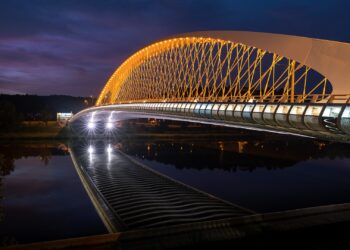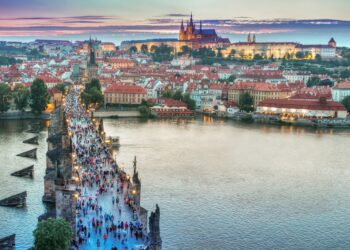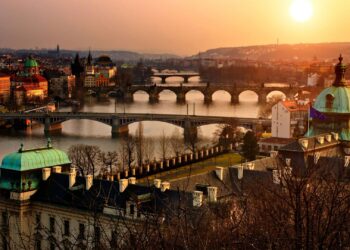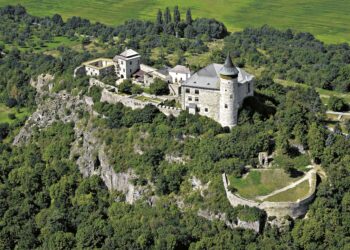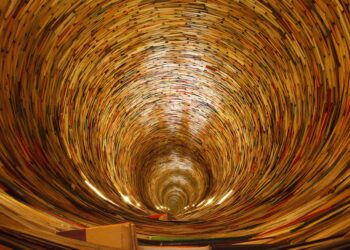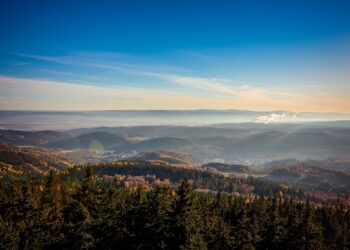UNESCO
Czechia joined the United Nations Educational, Scientific and Cultural Organization (UNESCO) on 22 February 1993 and in doing so continued the active work of Czechoslovakia, a founding member of the organization. Since joining, Czechia has shown exceptional interest in taking part in the formulation of the programs undertaken by the organization and taking an active role in their implementation. The Czech Commission for UNESCO and the Permanent Delegation of the Czech Republic to UNESCO have also played a crucial role in terms of strengthening cooperation.
Czechia takes great pride in its monuments, many of which have been added to the UNESCO World Heritage List.
Currently, there are 16 Czech sites on the list:
The historic town centers of Český Krumlov, Telč, Prague and Kutná Hora with St Barbara’s Cathedral and the Church of the Assumption of Our Lady in Sedlec, the pilgrimage Church of St John of Nepomuk in Žďár nad Sázavou, the Lednice–Valtice Cultural Landscape Area, the village of Holašovice, the gardens and chateau in Kroměříž, the Column of the Holy Trinity in Olomouc, Tugendhat Villa in Brno, the Jewish Quarter and St Procopius’ Basilica in Třebíč, the Litomyšl Chateau, and now also the National Stud Farm in Kladruby nad Labem, the Erzgebirge/Krušnohoří Mining Region, Jizera Mountains forest, and the famous spas Karlovy Vary, Mariánské Lázně, and Františkovy Lázně.
UNESCO Virtual tour
Explore UNESCO list
In the Czech Republic there are a total of 16 listed heritage reservations recognized by the international organization UNESCO.
- Prague - Historic Centre
- Český Krumlov - Historic Centre
- Telč - Historic Centre
- Žďár nad Sázavou - Pilgrimage Church of St John of Nepomuk at Zelená Hora
- Kutná Hora - Historical Town Centre with the Church of St Barbara and the Cathedral of Our Lady at Sedlec
- Lednice-Valtice - Cultural Landscape
- Kroměříž - Gardens and Castle
- Holašovice - Historic Village
- Litomyšl - Litomyšl Castle
- Olomouc - Holy Trinity Column
- Brno - Tugendhat Villa
- Třebíč - Jewish Quarter and St Procopius' Basilica
- Erzgebirge/Krušnohoří Mining Region/Ore Mountains
- Kladruby nad Labem - Landscape for Breeding and Training of Ceremonial Carriage Horses
- West Bohemian spa triangle - The Great Spa Towns of Europe
- Jizerské Mountains Beechwoods
Historic Centre of Prague
The settlement of Prague and its surroundings was continuous from the early Paleolithic until the Latenian period. With the arrival of the Celts, oppida (large, fortified Iron Age settlements) began to appear, which served as centers of settlement, administration, cults, manufacturing and trade, and as fortified strongholds. There is a school of thought that says that it was the Celtic Boii (plural) tribe that provided the basis for the name Bohemia. In the second half of the sixth century, the first Slavonic tribes arrived. In the ninth century, the ruling Přemyslid dynasty moved their family seat to Prague, thereby laying the foundation stone to this place as the seat of the princely and later royal Czech lands. Prague is an important urban monument reservation. The historic core, 866 hectares in size, encompasses the unique urban ensemble of Prague Castle and Hradčany, Malá Strana (Lesser Side) with Karlův most (Charles Bridge), Staré Město (Old Town) with Josefov (the preserved section of the former Jewish Town), Nové Město (New Town), Vyšehrad, and each monument situated in these areas. It was added to the UNESCO World Heritage List in 1992. Historic center Each part of the capital city of the Czech Lands – the Lesser Side, the Castle District, the Old and New Towns – was developed from the 10th century onwards. Along with Prague Castle, St. Vitus Cathedral and Charles Bridge, many churches and palaces were also constructed, and together they form a magnificent architectural, artistic, and spiritual ensemble.
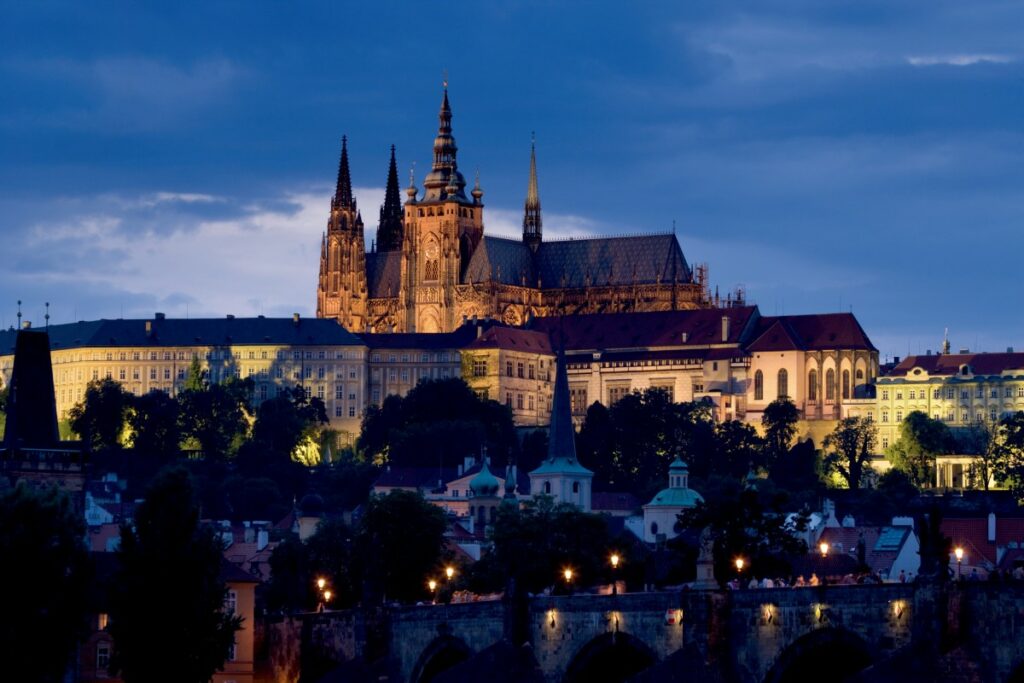
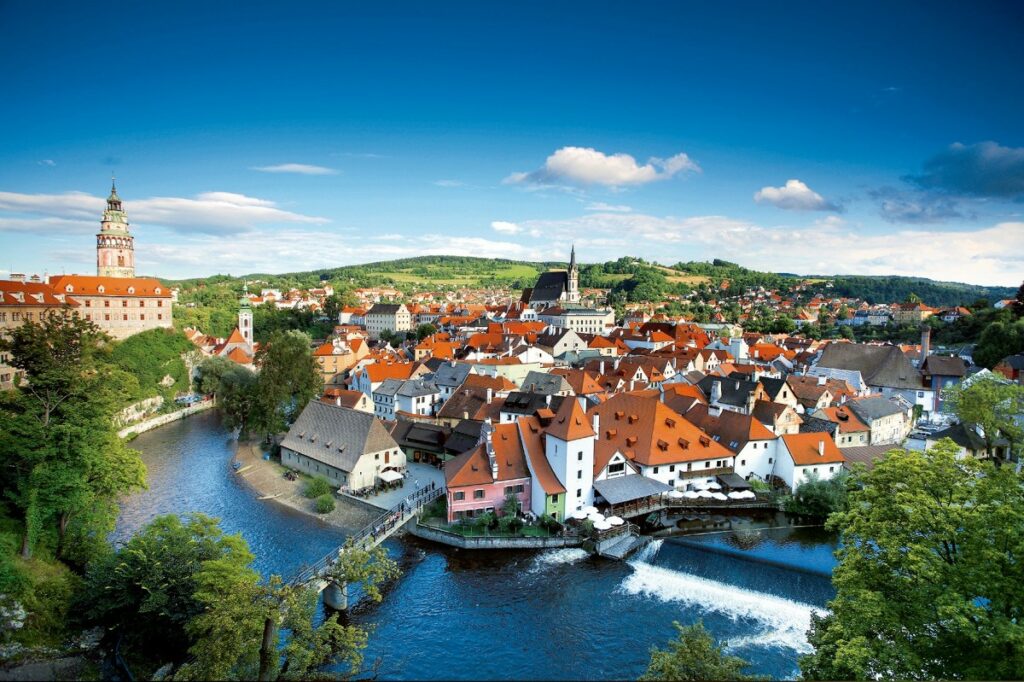
Historic Centre of Český Krumlov
In the southernmost part of the Czech Republic, there is a region which is ideal place for experiencing some amazing adventures. Its center is the town of Český Krumlov, which, although not large in size, is all the more attractive due to its bewitching atmosphere that harks back to ancient times. Thanks to its unique medieval buildings, it has rightly been protected by UNESCO since 1992. As a natural center, it is vibrant not only with history: over time it has also become a city of culture, art, and remarkable experiences. It boasts a wide array of institutions and cultural events, ranging from museums and galleries, seven musical festivals, traditional festivals and special night tours, to events held in the stylish inns. Surrounded by unspoiled natural beauty, it attracts all those who want to have an unforgettable, unusual, and fascinating time. Historic center The castle complex with its unique baroque theatre, the bend in the Vltava River, the city coat-of-arms with its five-leaved rose, medieval streets, and stone townhouses – this is Český Krumlov, a cosmopolitan city with a unique atmosphere.
Historic Centre of Telč
Telč is situated in the south-west corner of Moravia, halfway between Prague and Vienna. According to legend, the foundation of the city is associated with the victory of the Moravian Prince Otto II over the Bohemian King Břetislav in 1099. It was this victory that led to the construction of a chapel, later to become a church, and the establishment of a settlement, which today forms Staré Město (Old Town). The city saw its greatest period of expansion under the rule of Zacharias of Hradec in the 2nd half of the 16th century. At the beginning of the 19th century, Telč played an important role in the entire south-west region of Moravia, which was still growing with the arrival of the railway. Because the historical center of the city, surrounded by fishponds and ramparts, has retained its unique layout over the centuries, it was added to the UNESCO World Heritage List in 1992, which brought with it increased interest and a subsequent influx of tourists from around the world. Historic center The city was rebuilt on its original foundations following a devastating fire at the end of the 14th century. A number of the Renaissance and Baroque townhouses remain to this day, strengthened by a protective system of ponds. The Gothic castle was rebuilt in Renaissance style at the end of the 16th century.
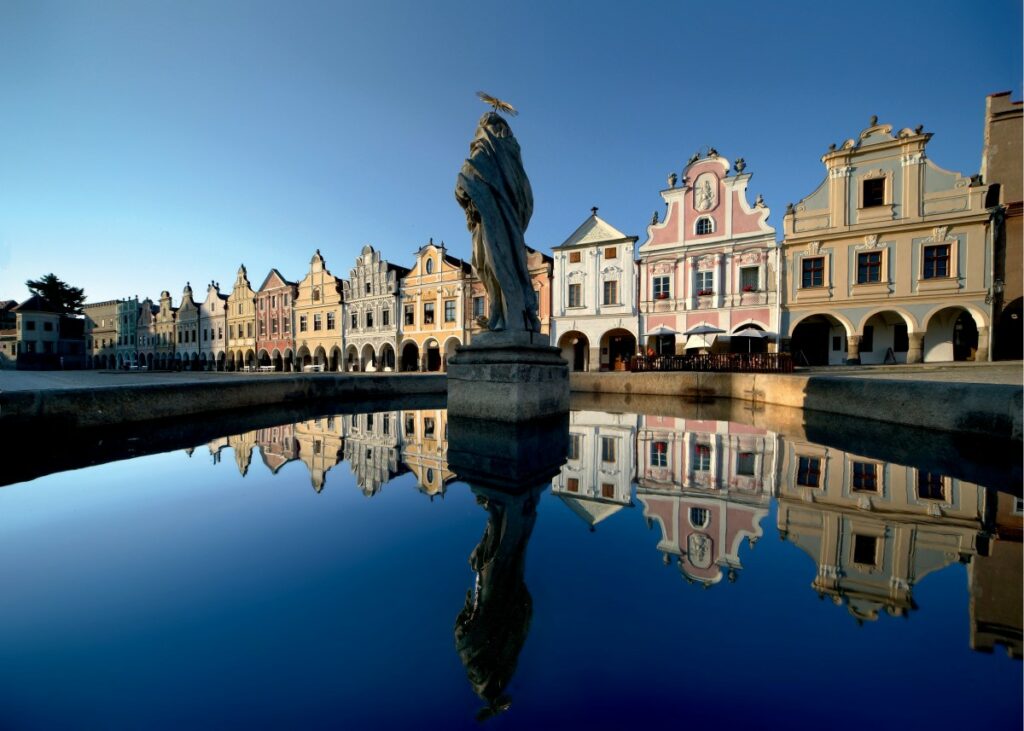
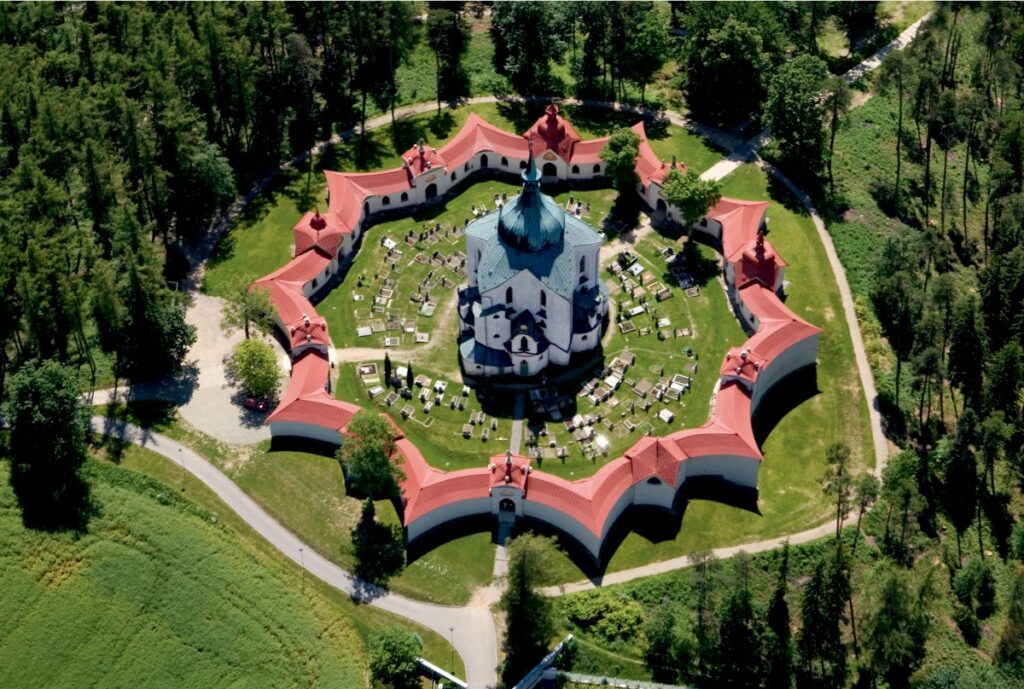
Žďár nad Sázavou
Pilgrimage Church of St John of Nepomuk at Zelená Hora
Žďár nad Sázavou was originally a market town, established on an ancient regional route, and at its inception it was closely linked with the establishment of the Cistercian monastery in 1252. The town was elevated to city status at the beginning of the seventeenth century. Today the city plays host to several cultural and social events, and for tourists it offers a whole range of active recreation options thanks to its advantageous position. The Pilgrimage Church of St John of Nepomuk at Zelená Hora was added to the UNESCO World Heritage List in 1994. The building, which dates from the beginning of the 18th century, is one of the finest projects by the architect Jan Blažej Santini-Aichl (1677-¬1723) and a splendid example of Baroque Gothic. The church, which is not large in size, defies all description, and this is reason enough to make a visit to see it with your own eyes. Pilgrimage Church of St. John of Nepomuk at Zelená Hora The pilgrimage church, dedicated to St. John of Nepomuk, was built in the early 1820s. It is the finest work of the architect Jan Blažej Santini and is the most original example of the so-called Baroque Gothic style. It was built on a five-pointed star plan and is surrounded by a cemetery and cloisters.
Kutná Hora
Historical Town Centre with the Church of St Barbara and the Cathedral of Our Lady at Sedlec
Historical Town Center with the Church of St Barbara and the Cathedral of Our Lady in Sedlec Kutná Hora is, as its name suggests, associated with the mining (“kutání” in Czech) of silver. In 1142, the first Cistercian monastery in the Czech lands was established in the nearby village of Sedlec, and, at the end of the 13th century, the original mining settlement of Cuthna antiqua – Old Kutna – soon became a wealthy royal city. In 1300, King Václav II issued the mining law “Ius Regale Montanorum” and, in the same year, initiated a coinage reform. One century later, another king, Václav IV, issued the Kutná Hora Decree, which amended the proportion of votes at Prague University in favor of the Czechs. Kutná Hora is therefore rightly considered to be the treasure-house of the land, whose wealth drove the expansion of the Kingdom of Bohemia. Its history and uniqueness were recognized in 1995 when the city was added to the UNESCO World Cultural and Heritage List. Historical Center, Church of St. Barbora, Cathedral of Our Lady in Sedlec Ever since the end of the 13th century, the history of Kutná Hora has been inseparably linked to the mining of silver ore. The historical center is an architectural jewel of European importance, and the late Gothic Church of St. Barbora and the Cathedral of Our Lady in Sedlec, rebuilt in Baroque Gothic style, create a notional entrance gateway to the royal mining city.
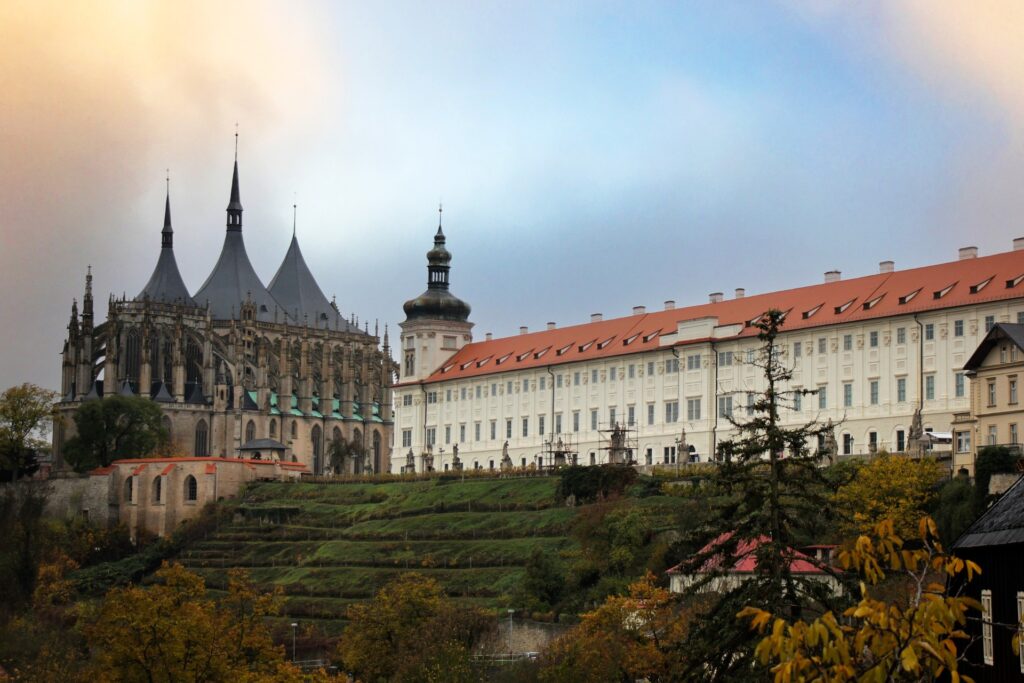
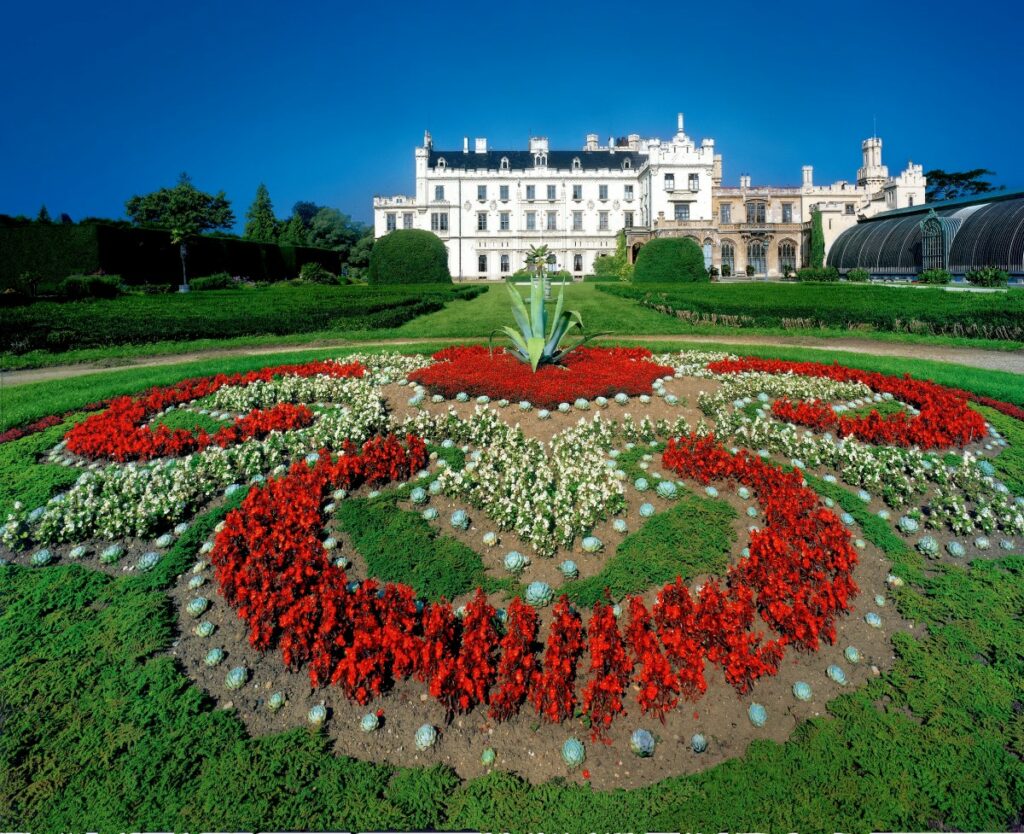
Lednice-Valtice Cultural Landscape
The Lednice-Valtice Cultural Landscape is spread over the site of a mighty 12th century border castle. Today it is the home of a romantic château, a picturesque village, and, in particular, a landscape architectural gem of unprecedented proportions. The notional milestone at the beginning of the long period of development of this whole area is the end of the 14th century when the Liechtenstein family obtained a share of the land. The current area, measuring almost 300 sq. km, is the result of landscaping based on English parks, Thanks to this, the Baroque and the neo-Gothic architecture of the two chateaux meet the small follies built in Romantic style. The Lednice-Valtice Cultural Landscape, as one of the treasures of UNESCO's World Cultural Heritage, was added to the list in 1996. Between the 17th and 20th centuries, the ruling Dukes of Liechtenstein transformed their domains into one huge park, where the Baroque and neo-Gothic architecture of their chateaux are married with smaller buildings and a landscape fashioned according to the English principles of landscape architecture.
Gardens and Castle at Kroměříž
Kroměříž was established as a market town on the crossroads of trading routes. At the time of Church expansion in the first half of the 12th century, it became the property of the Bishops of Olomouc. The village was elevated to town status in the second half of the 13th century, but the religious wars of the 14th century inflicted terrible wounds on the town. The year 1848 was a milestone in the town’s history, when the Constituent Assembly of the Austrian Monarchy was transferred here, and a period of progress began which elevated the town to the highest levels of spiritual culture and art. It is not only interesting for its history and architecture, but also for the surrounding nature, which offers visitors numerous free-time options. Each year, the city plays host to several music festivals, exhibitions, conferences, and congresses. The gardens and chateau were added to the UNESCO World Cultural and Heritage List in 1998. Gardens and chateaux The castle was built on earlier foundations in the 17th century and represents a uniquely preserved Central European Baroque princely residence. Its neighboring gardens include the Podzamecká garden, situated under the castle in a natural English-style landscape, and the early Baroque flower gardens.
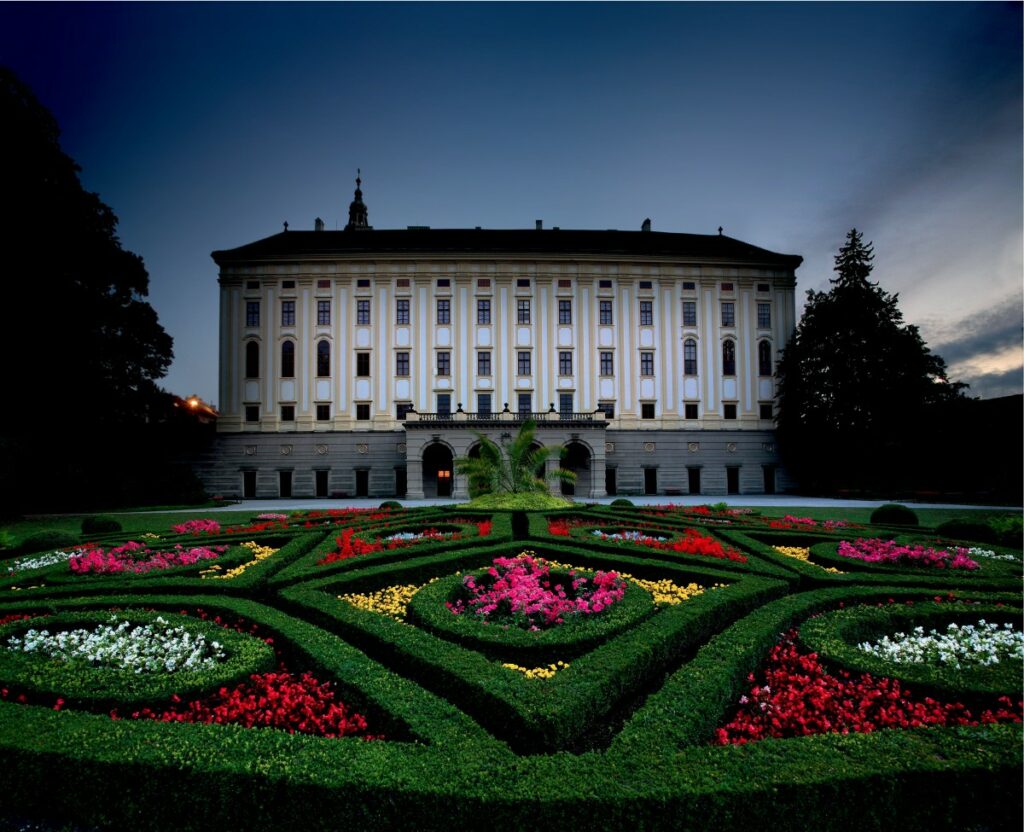
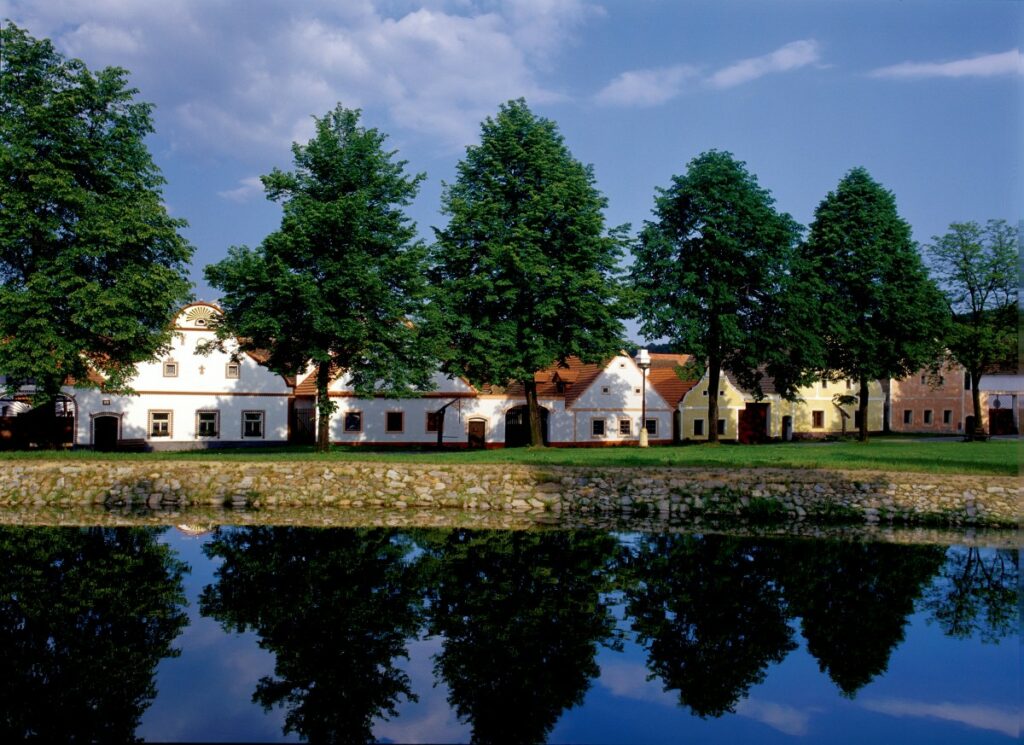
Holašovice Historic Village
The village was first mentioned in the mid-13th century during the period of the colonizing movements in the South Bohemian border region. The town has experienced two crippling blows over the years. The first was in the 16th century, when almost all of the original Czech inhabitants of the village were wiped out through plague, following which it was almost immediately occupied by German settlers. The Second World War dealt another blow when the attempts made by the German inhabitants to join the village to the Reich were successful. After the war, in 1946, the enforced withdrawal began which affected the majority of the German inhabitants. The empty buildings were then inhabited by Czechs from the inland, who built very little here, with just some repairs and maintenance being carried out. This meant that in 1998 the almost entirely preserved medieval system of houses and grain stores was inscribed in the UNESCO World Cultural Heritage List.
Village reservation
Holašovice is an exceptionally well-preserved example of a traditional Central European village. A number of high-quality village buildings from the 18th and 19th centuries in a style known as “South Bohemian Folk Baroque” have been preserved on a ground plan that dates from the middle ages.
Litomyšl Castle
Litomyšl was established at the end of the 10th and beginning of the 11th centuries around the trade route that connected Bohemia and Moravia. The dominant feature of the city is the Italianate Renaissance castle with its more than eight thousand examples of sgrafitto. It has been on the UNESCO World Cultural and Heritage List since 1999. Litomyšl is the birthplace of the composer Bedřich Smetana, whose name is commemorated by an annual opera festival. The Gothic town hall and a number of Renaissance and Baroque houses can be found on the 500-meter-long square. A walk through the historical streets ending in the monastery gardens is an unforgettable experience. Another interesting sight is the Portmoneum museum with its murals by Josef Váchal. Litomyšl is not only historical, however, for it has numerous modern buildings and is proud of the moniker Europe's Blooming City. It is also becoming a city of corporate tourism. Chateau and chateau grounds The Renaissance castle from the second half of the 16th century is an excellent example of an arcade castle built in Italianate style. Despite reconstruction of the interior at the end of the 18th century, outwardly it has retained an almost unadulterated Renaissance appearance, including the unique sgrafitto facades and gables. A number of commercial buildings and a garden have also been preserved.
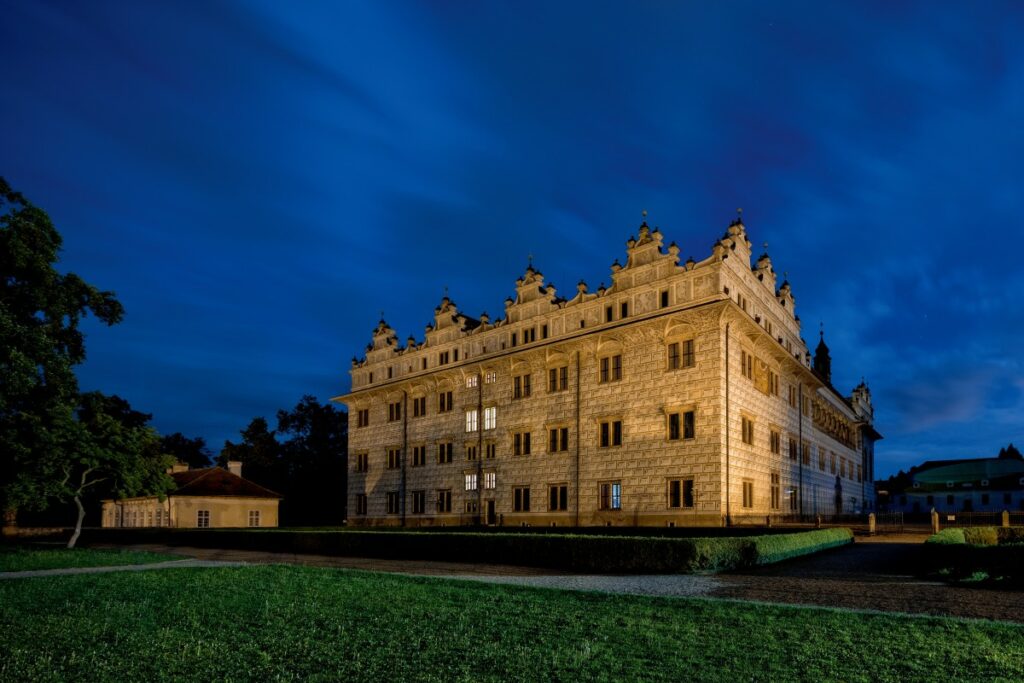
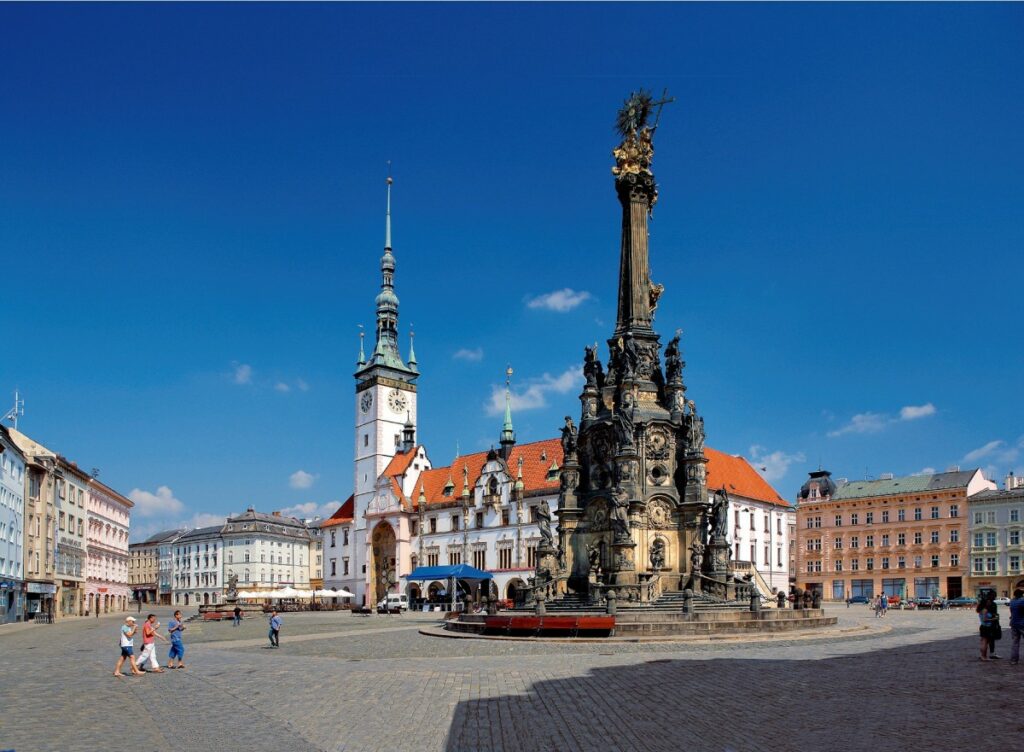
Holy Trinity Column in Olomouc
Olomouc lies at the heart of the Haná region, and is and always has been one of the most important cities in Moravia, where history has gone hand-in-hand with its people, science, and progress. The construction of plague columns in Christian countries was instigated by the Trident Council, and at the time of its construction from 1716-1754, the Olomouc monument was one of the last examples of this fashion wave, but in its creative concept, wealth of decoration and finally its dimensions and height, it differs considerably from all similar monuments. The consecration of the 35-meter-high column on 9 September 1754 was attended in person by the then first couple of the Monarchy, Empress Maria Teresa and her husband Francis I, Holy Roman Emperor, Duke of Lorraine. The Holy Trinity Column was added to the UNESCO World Heritage List in 2000. Holy Trinity Column This memorial column, erected in the early years of the 18th century, is the most outstanding example of a type of monument specific to Central Europe. In the characteristic regional style known as Olomouc Baroque and rising to a height of 35 m, it is decorated with many fine religious sculptures, the work of the distinguished Moravian artist Ondřej Zahner.
Tugendhat Villa in Brno
Brno is an important urban monument reservation and the second largest city in the Czech Republic. There has been continuous settlement here since the arrival of the Slavs in the 6th century, through the period of the Great Moravian Empire, and to the present day. Since the end of the 13th century the city has been protected by Špilberk Castle, which over time became the seat of the Moravian Margraves from the Luxembourg family and the Moravian regional capital. As with other cities, Brno has hidden secrets, for example the underground catacombs. For tourists from all over the world, the greatest attraction is Villa Tugendhat, which is the most important European work of the architect Ludwig Mies van der Rohe. It was added to the UNESCO World Heritage List in 2001. Villa Tugendhat Villa Tugendhat, built in 1929 - 1930 in Brno, is one of the most important examples of the Functionalist style in the European period of the architect Ludwig Mies van der Rohe. Use of a steel frame without load-bearing walls allowed the architect to create the new and informal concept of an open and variable space that communicates with its natural surroundings.
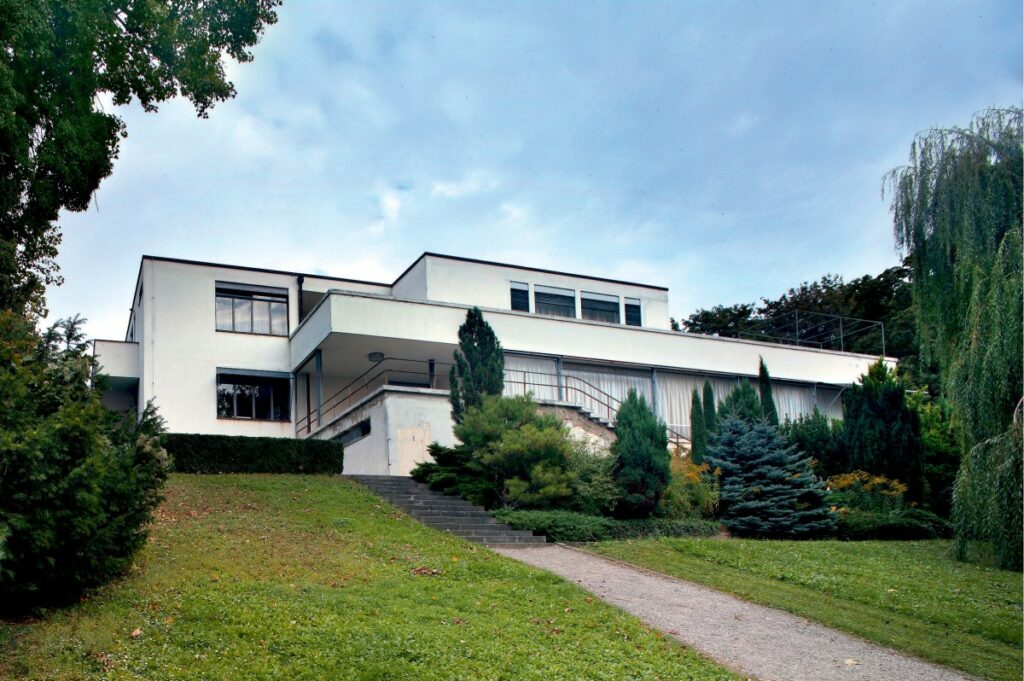
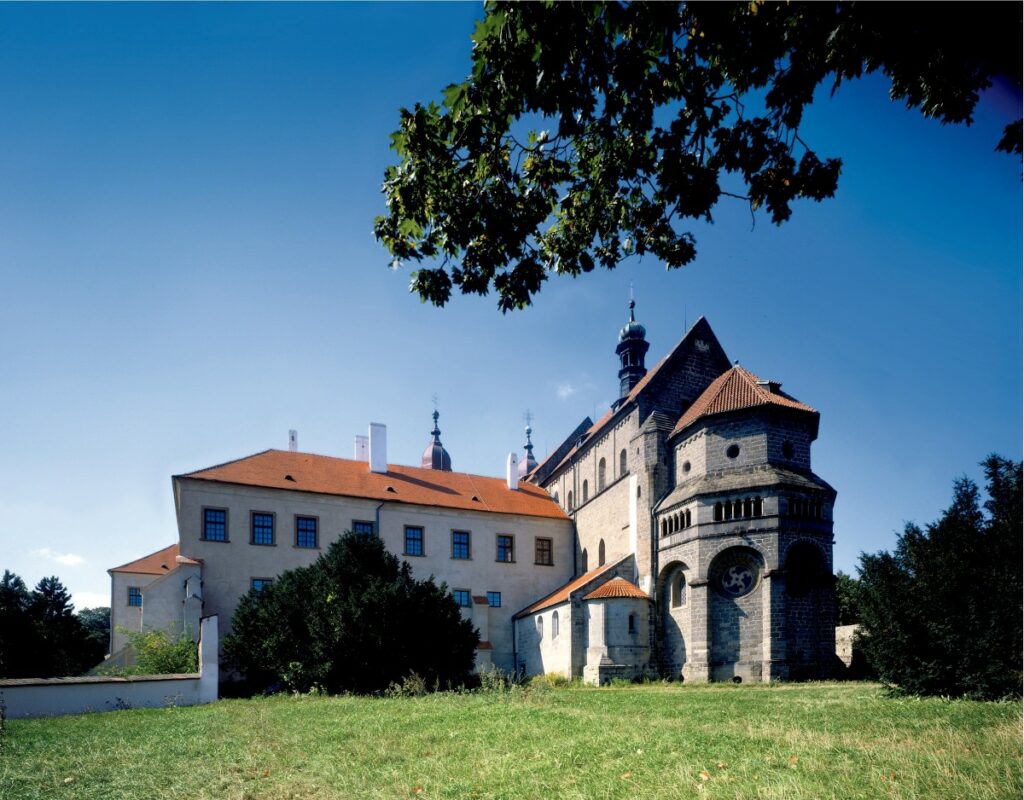
Jewish Quarter and St Procopius' Basilica in Třebíč
Třebíč dates from 1101 when a Benedictine monastery was established here. Thanks to its position on the banks of the Jihlava River and the munificence of its founders, the city became an important center for religious life and education. Today it is an important economic, administrative, political, and cultural center in south-west Moravia. The city offers a wide range of active recreation opportunities in the picturesque environment of the foothills of the Czech-Moravian Vysočina (Highland) region. The city was once a center of Jewish culture in Moravia, and the uniquely preserved Jewish Quarter bears silent witness to the cohabitation between Jews and Christians in this city. When we take our tour, we will go to the Jewish quarter and the Basilica of St. Prokop, which were added to the UNESCO World Heritage List in 2003. Jewish Quarter and St. Prokop's Basilica The ensemble of the Jewish Quarter and the Basilica is a unique example of the close co-existence of Christian and Jewish culture from the Middle Ages until the 20th century. The Basilica of St. Procopius, originally built as part of the Benedictine monastery in the early 13th century, was influenced by Western European ideas in its construction.
Ore Mountains
Erzgebirge/Krušnohoří Mining Region
Mining region Erzgebirge / Ore Mountains Thanks to more than 800 years of almost continuous ore mining and processing, a unique industrial landscape was created in the Ore Mountains with unique montane monuments both above and below ground and a dense network of mining towns. It illustrates the enormous impact that ore mining and processing on both sides of the mountains has had on the development of mining and metallurgy around the world, namely the contribution of world-class inventions and innovations in mining and metallurgical technologies. On the Czech side, these are the mining landscapes of Jáchymov, Abertamy - Boží Dar - Horní Blatná, Krupka, Mědník, and the Red Tower of Death.


Kladruby nad Labem
Landscape for Breeding and Training of Ceremonial Carriage Horses at Kladruby nad Labem
Landscape for Breeding and Training of Ceremonial Carriage Horses at Kladruby nad Labem The cultural landscape includes not only the stud farm, but the surrounding pastures, including artificially built water canals and tree-lined alleys. The landscape is an excellent combination of the work of nature and man in preserved pre-industrial form and represents a significant phenomenon of human civilization, which for centuries has been the specialized breeding of ceremonial, representative horses. For centuries, the stud farm has been breeding the Old Kladruby roan, a unique breed of Baroque horse that exists nowhere else.
© 2022 Ministry of Foreign Affairs


